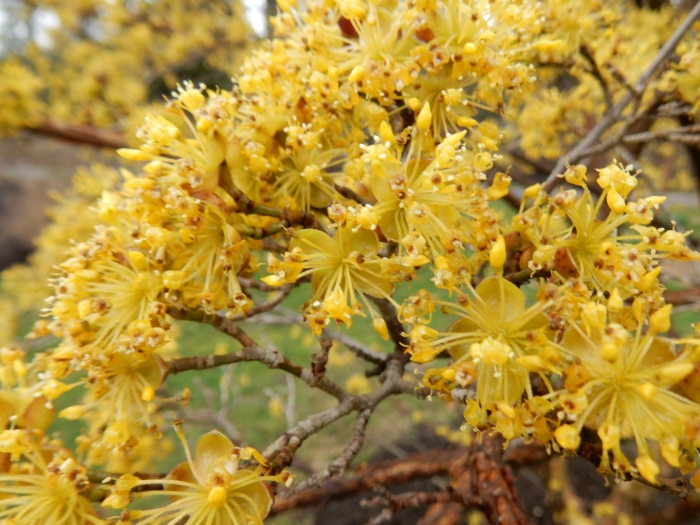Japanese Cornel Dogwood
(Cornus officinalis)
Japanese Cornel Dogwood (Cornus officinalis)
/
/

Shuvaev
CC BY-SA 4.0
Image By:
Shuvaev
Recorded By:
Copyright:
CC BY-SA 4.0
Copyright Notice:
Photo by: Shuvaev | License Type: CC BY-SA 4.0 | License URL: https://creativecommons.org/licenses/by-sa/4.0 | Uploader: Shuvaev | Publisher: Wikimedia Commons | Title: Cornus_officinalis,_Morris_Arboretum_07.jpg | Notes: Uploaded own work with UploadWizard |

















































Estimated Native Range
Summary
Cornus officinalis, commonly known as Japanese cornel dogwood or Japanese cornelian cherry, is a deciduous shrub or small tree native to forest margins, hillsides, and along streams in China. It typically grows to a height of 15-26 feet (4.5-8 meters) with a similar spread. The plant is characterized by its rough, exfoliating bark that adds textural interest, especially in winter. In early spring, before the leaves emerge, it produces a profusion of small, acid yellow flowers that are quite showy and attract early-season pollinators. The flowers give way to bright red, cherry-like fruits in late summer, which are both ornamental and edible, though somewhat sour.
Japanese cornel dogwood is appreciated for its multi-season interest, from the early spring flowers to the striking bark and the colorful fall foliage, which turns shades of purple and red. It is used in gardens and landscapes for border planting, as a specimen, or for naturalizing in woodland settings. The plant prefers full sun to part shade and can adapt to a range of soil types, provided they are well-drained. It requires moderate watering and is relatively low maintenance. While it is not commonly afflicted by serious pests or diseases, it can occasionally suffer from leaf spot or twig blight. Japanese cornelian cherry is also valued for its medicinal properties, with the fruit traditionally used to treat liver ailments and improve erectile function, and the bark containing compounds like oleanolic acid and ursolic acid, which have protective health benefits.CC BY-SA 4.0
Japanese cornel dogwood is appreciated for its multi-season interest, from the early spring flowers to the striking bark and the colorful fall foliage, which turns shades of purple and red. It is used in gardens and landscapes for border planting, as a specimen, or for naturalizing in woodland settings. The plant prefers full sun to part shade and can adapt to a range of soil types, provided they are well-drained. It requires moderate watering and is relatively low maintenance. While it is not commonly afflicted by serious pests or diseases, it can occasionally suffer from leaf spot or twig blight. Japanese cornelian cherry is also valued for its medicinal properties, with the fruit traditionally used to treat liver ailments and improve erectile function, and the bark containing compounds like oleanolic acid and ursolic acid, which have protective health benefits.CC BY-SA 4.0
Plant Description
- Plant Type: Shrub
- Height: 15-30 feet
- Width: 15-25 feet
- Growth Rate: Moderate
- Flower Color: Yellow
- Flowering Season: Spring, Winter
- Leaf Retention: Deciduous
Growth Requirements
- Sun: Full Sun, Part Shade
- Water: Medium
- Drainage: Medium
Common Uses
Bee Garden, Bird Garden, Drought Tolerant, Edible*Disclaimer: Easyscape's listed plant edibility is for informational use. Always verify the safety and proper identification of any plant before consumption., Hedges, Low Maintenance, Showy Flowers, Street Planting
Natural Habitat
native to forest margins, hillsides, and along streams in China
Other Names
Common Names: Japanese Cornelian Cherry , Oriental Dogwood , Asiatic Dogwood , Haru-Koganebana , Sanshuyu , Sansuyunamu , Cornelian Cherry Dogwood , Shan Zhu Yu
Scientific Names: Cornus officinalis , Cornus mascula var. japonica , Cornus mascula var. japonica , Cornus officinalis var. koreana , Macrocarpium officinale
GBIF Accepted Name: